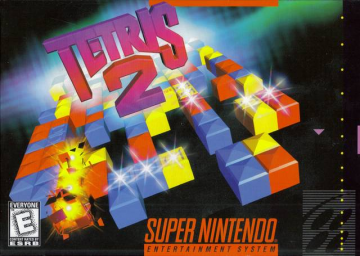TL;DR Use the American version, it saves 70 seconds over NTSCJ in the 80 round clear category and 24 in the 30 round clear category.
Math:
This was done using a 60 FPS recording of game footage. E - Tetris 2 (PAL/European Release) U - Tetris 2 (NTSC-US/American Release) J - Tetris Flash (NTSC-J/Japanese Release)
Block Breaking (from the time a piece is set to the next sequence of events starting e.g. blocks cascading or next move) E - 29 Frames U - 29 Frames J - 29 Frames
This is by far the most important information, as even a one frame difference would make the lowest frame version the obvious choice. They were smart enough to make it the same in each version.
Level Intro without Bonus blocks (from the moment A is pressed on start level, until it is possible to start the level) E - 55 Frames U - 45 Frames J - 45 Frames
Japanese and American releases are the same, the animation takes slightly longer on the European release due to the adjusted framerate.
Level Outro (from the moment the last block disappears on screen to the appearance of the score on the round clear screen) E - 54 Frames U - 43 Frames J - 43 Frames
Japanese and American releases are the same, the animation takes slightly longer on the European release due to the adjusted framerate.
Bonus Countdown to Press Start (from a 4000 point bonus to the first moment you are able to press A to start next level) E - 209 Frames U - 172 Frames J - 172 Frames
Japanese and American releases are the same, the animation for the countdown takes significantly longer on the European release due to the adjusted framerate.
Cutscene Intro to Exit (from the fadeout in the level clear screen to the first possible moment to exit out) E - 157 Frames U - 149 Frames J - 368 Frames
The American version is the fastest, being faster than the European release due to framerate adjustments. The Japanese release stalls after the screen fades to black for significantly longer than the other two versions. This is consistent across all cutscenes.
Cutscene Outro to Press Start (from starting the exit sequence of the cutscene to the press start screen of the next level) E - 89 Frames U - 89 Frames J - 89 Frames
Interestingly enough this is the same across versions.
Press Start with Block Bonus to play screen (from pressing start with a block bonus to the first frame able to start level) E - 190 Frames U - 163 Frames J - 175 Frames
Interestingly, the Japanese release stalls on the block bonus segment, making the american release faster in this.
Total Time Loss for each game¤:
80 Round: U - 0 Frames/0 Seconds (This is the control) J - 4233 Frames/70.55 Seconds E - 3243 Frames/54.05 Seconds + Bonus Countdown Time (Estimated around 6,000 Frames maximum ~100 seconds)
30 Round:
U - 0 Frames/0 Seconds (This is the control)
J - 1443 Frames/24.05 Seconds
E - 663 Frames/11.05 Seconds + Bonus Countdown Time (Estimated around 2,000 Frames maximum ~33 seconds)
¤Methodology: 80 Round - 79 levels possible to start with bonus, level 1 must be started with no bonus, Countdown time is not calculated due to that requiring me find the biggest bonuses possible per level and that is hard. 15 cutscenes since run ends at 80th scene. 30 Round - 29 levels possible to start with bonus, level 1 must be started with no bonus, Countdown time is not calculated due to that requiring me find the biggest bonuses possible per level and that is hard. 5 cutscenes since run ends at 80th scene.
As you can see, the American version wins, with the PAL version losing out in the long run, assuming you are chaining bonuses, which cause discrepancies that increase the more bonuses achieved.







